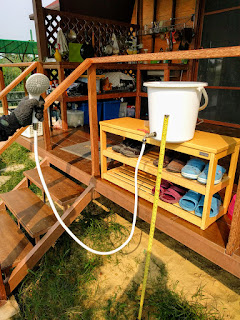In the shower we are building in BaanLoiNaam, we would like to mount a water tank as high as possible under the roof and use gravity pressure to run the shower and sinks. But the height difference is not all that much, meaning there will not be much pressure. So I figured it would be worth an experiment to determine if the height differential will be enough to feed the water into the house.
For this experiment, my premise is that the shower head is much higher than the sink, so the water pressure would be the lowest there. Additionally, the shower probably depends on more water pressure to function than the sink does, so if the shower works, the sinks won’t be a problem.
Based on a rough estimate of the highest point we can mount the water tank under the roof, I am guessing that the shower head may have no more than 70cm of height differential relative to the water in the water tank.
So I asked Than to pick up the cheapest shower head he could find at HomePro the last time he needed to pick something up there and I connected it to a water bucket for this test:
As an aside: the cheap shower head cost 100THB which comes out to less than $3! I haven’t shopped for home improvement items in the USA for many many years, but my guess is that the supply of cheap Chinese manufactured items such as this get on the shelves at a lower price here than in the US. Is it more efficient supply routes from China to Thailand (which I doubt), value pricing in the US, would these products in Thailand not pass US quality requirements, or have prices in the US come down quite a bit since I last looked? I’d be curious to find out.
The tape measure is roughly zeroed at the water line in the bucket, and the shower head is simply connected to a tap on the side of the bucket.
Mostly for my own records, here were the pictures I took at different heights:
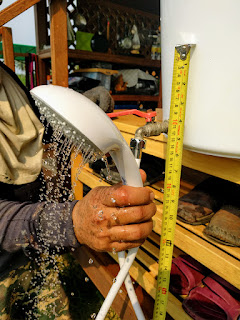 |
| Shower head at approximately 10cm water pressure |
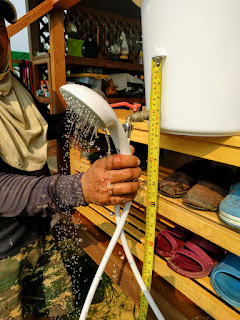 |
| Shower head at approximately 10cm water pressure |
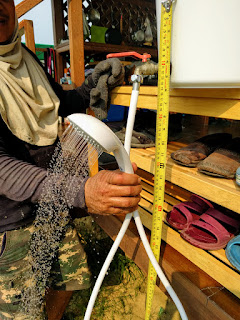 |
| Shower head at approximately 20cm water pressure |
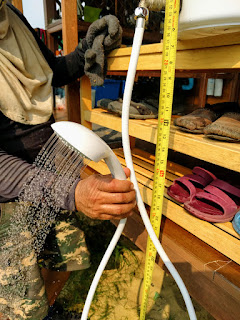 |
| Shower head at approximately 35cm water pressure |
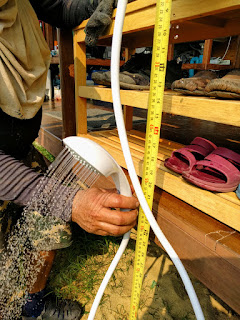 |
| Shower head at approximately 45cm water pressure |
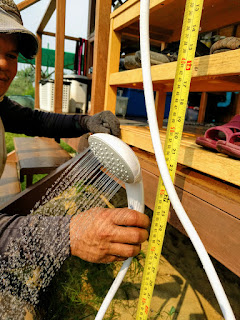 |
| Shower head at approximately 55cm water pressure |
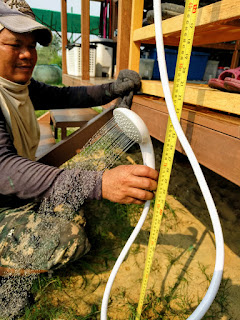 |
| Shower head at approximately 60cm water pressure |
 |
| Shower head at approximately 70cm water pressure |
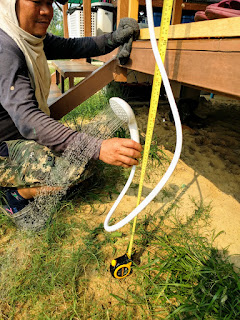 |
| Shower head at approximately 80cm water pressure |
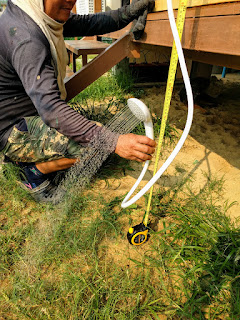 |
| Shower head at approximately 90cm water pressure |
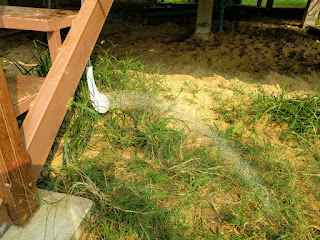 |
| At about 1m water pressure, the shower head can spray horizontally fairly well |
The conclusion here is that at the 20-30cm range, it would probably be too much of a trickle to work as much of a shower, but at around the 70cm pressure head I am expecting, it looks like it might be enough to work.
Other variables that will come into play for the actual shower are whether the shower head I plan to use requires more pressure (which it might if it is a “water saver” type), whether the longer piping will create more friction thus restricting flow more (but the tank will be nearly on top of the shower, so there will only be about 2-3m of additional piping), or whether these flows look good but aren’t really enough once I get under it and try to shower with it for real.
I figure all of the above are relatively minor enough that I will probably just build the shower this way and live with the results however they turn out. But I’ll make sure to post here when it is done in case anyone comes across this and wonders what the minimum height their water tank needs to be relative to their shower in their off-grid house.
